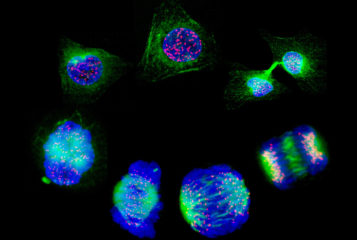A topical gene therapy for children with a rare, potentially fatal genetic condition that causes skin wounds and blistering, has been approved by the US Food and Drug Administration (FDA).
Dystrophic epidermolysis bullosa, also known as butterfly disease, is caused by variations in the COL7A1 gene. The disease causes painful blisters and wounds, that can be debilitating. The gene therapy developed by company Krystal Biotech can be directly applied to broken skin in a gel and significantly improves wound healing.
'Vyjuvek is the first FDA-approved gene therapy treatment for dystrophic epidermolysis bullosa, a rare and serious genetic skin disorder. Today's action demonstrates the FDA's ongoing commitment to supporting the development and evaluation of new treatments that address unmet needs for rare diseases or conditions.' said Dr Peter Marks, director of the FDA's Center for Biologics Evaluation and Research.
COL7A1 encodes a protein called type VII collagen (COL7), which stabilises and connects the outer and middle layers of the skin. Variants of the gene can lead to reduced expression of COL7A1, which in turn results in extremely fragile skin. Even slight friction can cause skin tears and blisters that are prone to infections in affected individuals.
The severity of symptoms varies based on the type of dystrophic epidermolysis bullosa, recessive and dominant. The recessive form is usually more severe and can lead to debilitating outcomes. These include widespread blistering, disfigurement, loss of vision, medical complications and premature death.
Gene therapies are usually given intravenously or by injection, where genetic material is delivered via a viral vector to the cells. The virus used as a vector is altered so that it does not cause diseases in the recipient. Researchers at Krystal Biotech, modified a herpes-simplex virus in the laboratory to deliver copies of COL7A1 without disease-causing variants to open wounds and blisters. The herpes-simplex virus is very common and fairly safe but has a natural ability to evade the immune system, which improves effectiveness of gene delivery.
Vyjuvek is the first of its kind that can be directly applied to the surface of the body without the need for injections. It is mixed with an inactive gel that can then be topically applied as a droplet. The topical gene therapy has additional modifications so that it only targets damaged cells. Healthy skin might also act as a natural barrier, thus allowing highly localised therapy.
Minimal adverse reactions were observed in the original study published in Nature Medicine and a follow up study published in New England Journal of Medicine, where Vyjuvek completely healed 65 percent of wounds in patients, compared to 21.6 percent with placebo treatment. Long term outcomes remain to be investigated, however so far repeat usage has not caused serious side effects.
Sources and References
-
FDA approves first topical gene therapy for treatment of wounds in patients with dystrophic epidermolysis bullosa
-
The FDA just approved rub-on gene therapy that helps 'butterfly' children
-
US FDA approves Krystal Biotech's skin-disorder gene therapy
-
Krystal's Vyjuvek becomes first topical gene therapy with FDA nod to treat rare skin disease
-
Trial of Beremagene Geperpavec (B-VEC) for Dystrophic Epidermolysis Bullosa
-
Krystal Biotech receives FDA approval for the first-ever redosable gene therapy, VYJUVEK™ (beremagene geperpavec-svdt) for the treatment of Dystrophic Epidermolysis Bullosa
-
In vivo topical gene therapy for recessive dystrophic epidermolysis bullosa: a phase 1 and 2 trial






Leave a Reply
You must be logged in to post a comment.